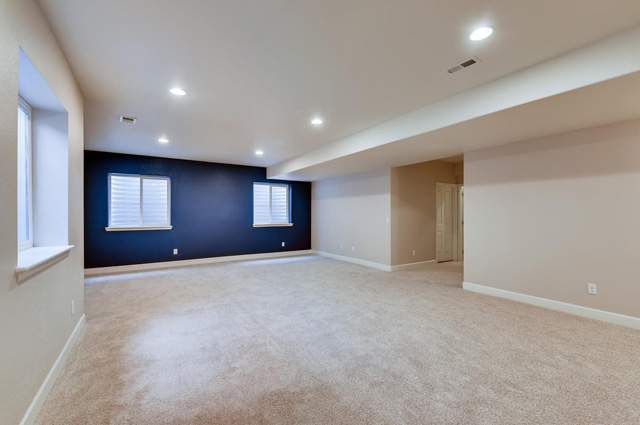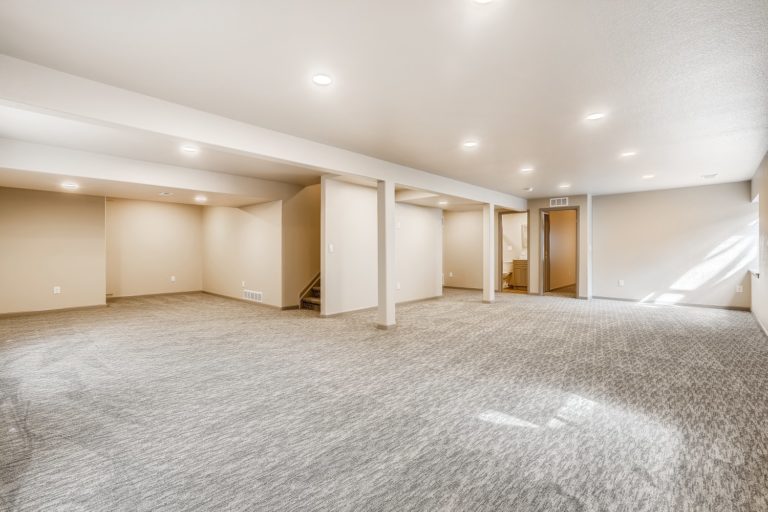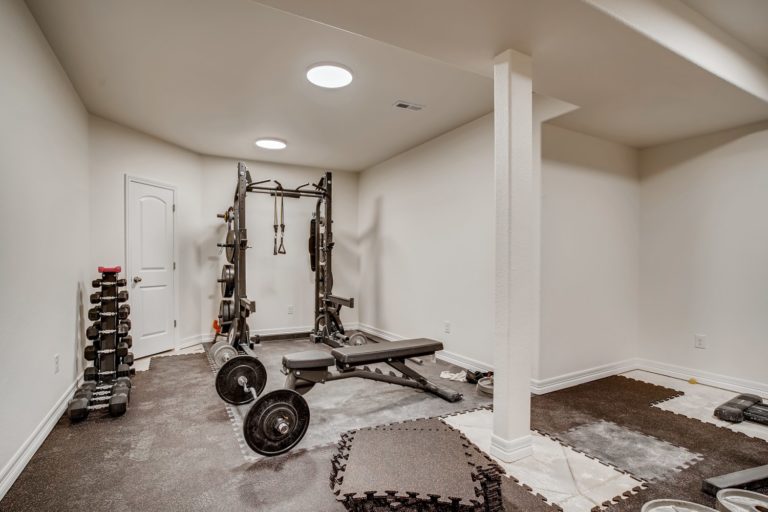Avoid these costly mistakes
Your basement takes up an entire floor of your home. That’s a lot of space. Whether you plan to turn it into a home gym, your personal office, the kids’ favorite hangout, or a state-of-the-art home theater, there are seven things you should never do when renovating your basement.
- Skimp on lighting –
- Basements are notoriously dark places, even if you happen to have windows or a daylight basement. Make sure you have a good lighting plan to avoid potential staircase injuries.
- Ignore ceiling height –
- 84” is the minimum ceiling height in the IRC code book. A seven-foot ceiling may sound usable, but it can have some surprising side effects. If you are not used to the shorter ceiling height, your brain will tell you to duck, which can cause considerable neck pain.
- Shorter ceilings have also been shown to increase feelings of claustrophobia. If it is within your budget to have ducts and pipes moved to accommodate a taller ceiling, we highly recommend doing so. And remember, exposed ceilings are not a bad thing.
- DIY something you have no experience with –
- If you have never attempted to move mechanical ducts or install drywall, the basement is not the greatest place to start. Because your basement is an integral part of your home’s foundation walls and tends to have different moisture needs, this is one area that’s best left to the pros.
- Make window openings without talking to an engineer –
- The walls of your basement are also the foundation walls supporting the entire weight of your home. If you are interested in adding more natural light or making sure you meet egress requirements, talk to an engineer and make sure it’s possible to do so without compromising the structure of your home.
- Not include a powder room –
- Having some basic plumbing like a toilet and a sink is a great benefit to your finished basement. It’s a great feature for helping a sick kid or cleaning up a wine spill. And it also means you don’t have to run up a flight of stairs every time you feel the urge to go.
- Skip waterproofing –
- Depending on where your home is located, the basement tends to be one of the wettest places of the home, and it’s the first place to go when there’s flooding. Properly waterproofing your basement before installing flooring and drywall is essential.
- Consider going a step further and installing a dehumidifier. If your basement is part of a slab-on-grade foundation, get the moisture content of your concrete tested. This could have a significantly negative impact on any flooring you install.
- Opt for the cheapest option –
- There are lots of things that can go wrong when remodeling your basement. Don’t just go for the cheapest materials or the cheapest labor.
- If you are someone who is easily annoyed by loud sounds, it is worth it to spend a little extra and install quality soundproofing between floors.
- If you plan to have friends and family in the space, consider splurging on quality storage to keep the space looking guest-friendly. Basement remodeling is not a time to skimp on your investment.
Your home is a valuable asset to your life. You need a basement remodeler who is an expert, and materials that can be counted on to perform their job. Give Timberstone a call today to learn about our easy design-remodel process and see how we can transform your basement.



